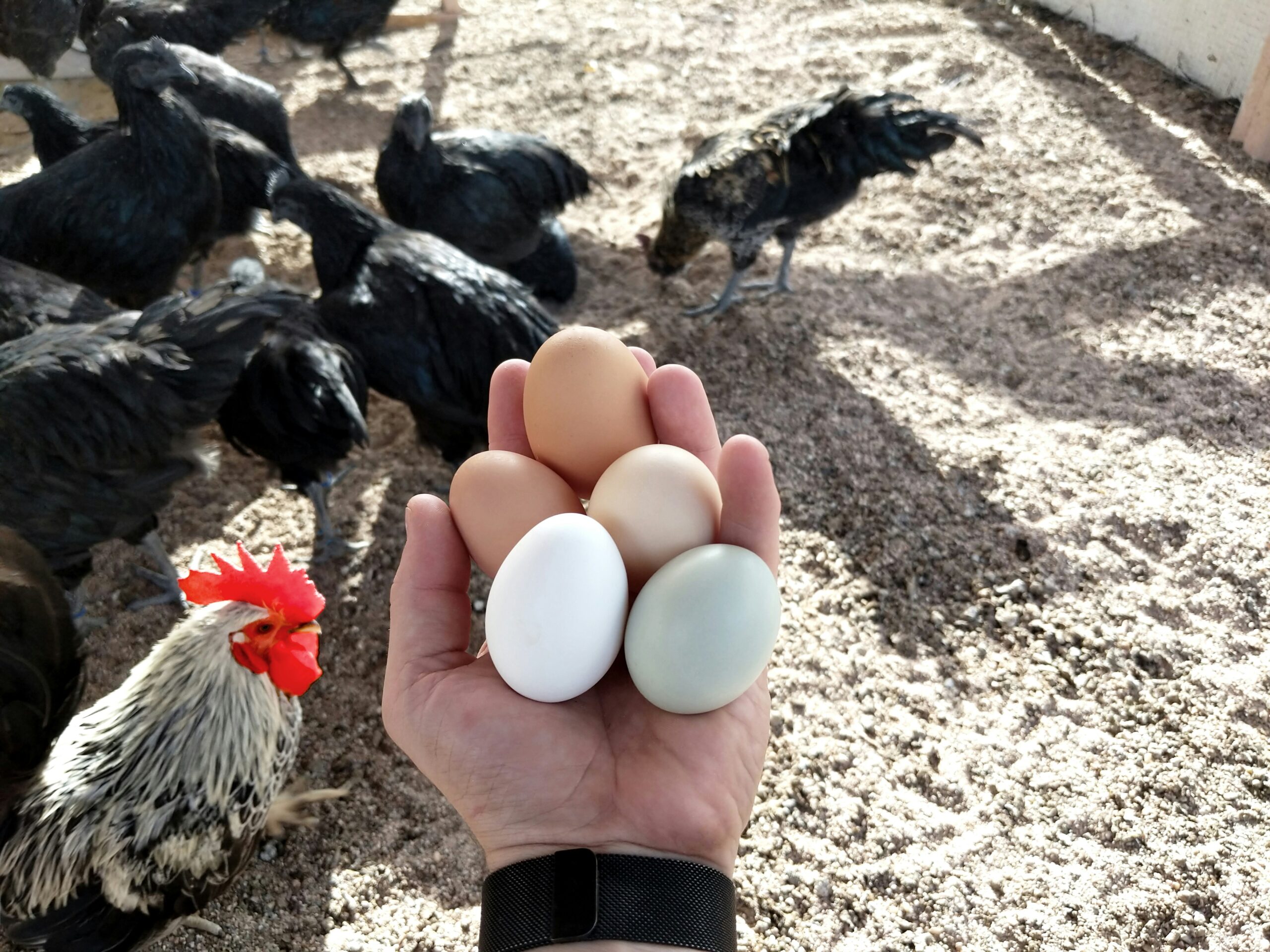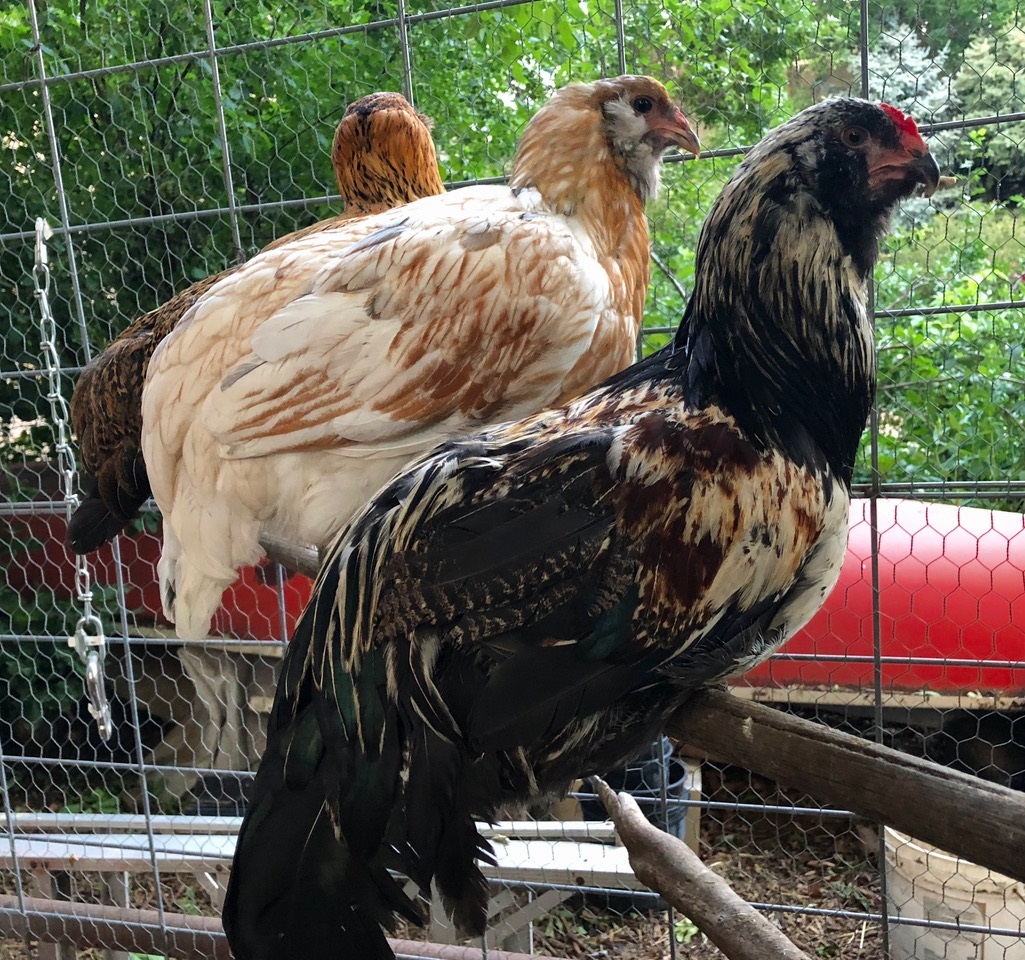
In Boulder County there are some predictable signs of spring’s arrival.
The tulips are up on the Pearl Street Mall. The Boulder Farmers Market has opened. You can hear the sound of baby birds in the leafing trees. And a line forms outside Jax Farm & Ranch in Lafayette early on weekday mornings in April and May.
This year, the lines might be longer than usual.
“Since the price of eggs starting going up, we’ve had a lot of new people coming in to start flocks,” says Amy Thompson, pet and equine department manager.
How to start a flock
Homeowners and renters need to check if there are city or HOA rules regarding raising poultry. Visit bit.ly/BoulderChickenRules for some basics.
Researching the egg-laying habits of certain breeds is a good idea, too. Some lay a lot; others lay fewer but larger eggs, according to Thomspon. Some chickens lay all year; others take the winter off. Living conditions in the coop also influence yield.

Chicks are typically priced at $3 to $5 each, with higher prices for more exotic breeds: jaxgoods.com/pages/chicks-at-jax details the date specific breeds of chicks will be available.
Thompson recommends a minimum of three chicks for a flock “but usually six.” You’ll also need “a box or tub for the chicks until they transfer to your coop, and a feeder, water bottle, feed, a heater and a thermometer.”
The cost calculus
Thompson estimates that flock startup costs are usually $100 to $200, with additional costs to build a coop with an outside fenced run. A 50-pound bag of chicken feed can cost anywhere from $15 to about $50. A small flock might go through a 50-lb bag in a few weeks.
Catherine Schweiger saved money on her Pine Street coop by using recycled materials from ReSource Central in Boulder. Even so, she says, from a purely economic standpoint, chickens aren’t worth it.
“It is NOT cost effective to get chickens for eggs,” she says. “But it’s still worth it,” for tangible and intangible reasons.
Thompson agrees, with the caveat that costs, responsibilities and eggs can be shared with neighbors and friends.
“We always make sure new folks know what is involved in raising a flock,” she says. “They need to know that it will be six months or longer before they will see any eggs.”

Work for your yolks
As with other pets, keeping hens is a daily and year-round responsibility.
“I maintain the henhouse and take care of the chores and get eggs two days a week,” Schweiger says. “Two of my tenants and two of my neighbors take the other days of the week.”
The number of multi-colored eggs varies from none to dozens. When “the girls” are especially prolific, Schweiger shares the bounty with family.
The chickens eat table scraps as well as feed and insects. When the henhouse gets cleaned a couple of times a year, the droppings and bedding go into a compost bin to become soil to raise vegetables.
“It’s really very little work day to day, mostly food and water. The most important thing is keeping the gate closed so predators can’t get in.”
Bobcats and foxes and rats, oh my
“The most common mistakes I’ve seen are not predator-proofing coops and having the wrong food, which can reduce egg production,” says Thompson. “Also, you need to keep young chicks separate from the older birds or they will get picked on.”
“Coop” doesn’t adequately describe the heavily fortified poultry bastion Schweiger has crafted over the years.

“You must build a serious predator-proof year-round home for hens,” she says. “In this neighborhood, we have racoons, foxes, bears, mountain lions and hawks coming down from foothills looking for a meal, plus cats and dogs.”
And then there are the rats. They aren’t a plague, but rats are more prevalent in Boulder than city officials may want to admit.
“The rats really got worse after the 2013 flood,” Schweiger says. “We see them all the time. They try to tunnel under the henhouse to get at the feed.” One corner of her hen house is sinking into all the rat tunnels.
The chickens get fed by learning to step on a treadle with their claws. “The rats aren’t heavy enough to push it down,” she says.
What about the bird flu?
Because of the avian flu epidemic devastating commercial flocks and driving egg prices up, chicken keepers must be aware of local reports of avian flu nearby.
“My hens don’t run around outside much unless someone is watching because of the predators, so they don’t have any contact with wild birds that can carry the virus,” Schweiger says.
When hens die from predators or natural causes, they need to be buried, not thrown in the trash. If they show signs of disease, it must be reported to the Boulder County Health Department.
Home-raised chickens are generally not consumed because they need to be slaughtered at a registered facility. “Also, the meat is really, really tough when they get old,” Schweiger says.
Schweiger’s flock includes eight hens, and most are 8 to 9 years old.
“They are old,” she says, “but they are still laying.”

Finding local eggs
If you can’t raise a flock, you can access farm eggs locally. The “Farm Fresh Eggs” signs start popping up in the spring on Boulder County roads. Check farms’ social media for availability. Many local farm stands are offering chicken (and sometimes duck) eggs including:
- 7th Generation Farm, Louisville: 7th-generation-farm.square.site
- Black Cat Farm, Boulder: blackcatboulder.com
- Cure Organic Farm, Boulder: cureorganicfarm.com
- Ollin Farms, Longmont: ollinfarms.com
The Boulder Weekly will publish a complete guide to Boulder County Farm Stands later in the season as more roadside stands open. Find last years at bit.ly/BWFarmstandGuide
Locally raised eggs are also available at the Saturday Boulder and Longmont Farmers Markets, and online for pickup at bcfm.org
Words to Chew On: The agony and the eggs
“I don't know which is more discouraging, writing literature or raising chickens.” — E. B. White, author of Stuart Little and Charlotte’s Web.
John Lehndorff is the exhibit historian for Boulder Eats! opening in November at the Museum of Boulder. Comments nibbles@boulderweekly.com
